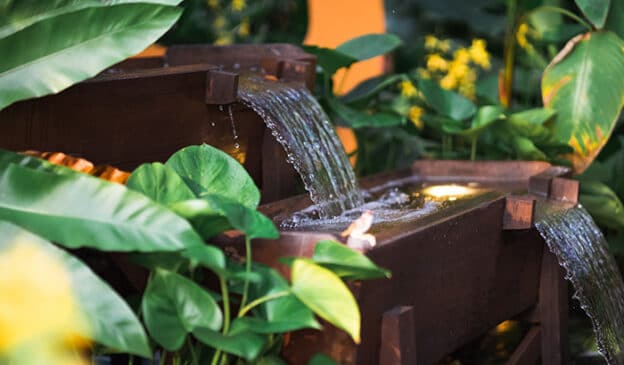As a homeowner, you should aim to improve drainage in your yard. Problems start with a wet spot on your lawn or a puddle that your kids jump in.
However, poor yard drainage is more than just a quirk or nuisance—it can indicate the danger of major yard erosion or a basement flood. Water can collect from precipitation like snow or rain, sprinkling systems, or irrigation runoff. This moisture needs to drain properly, or it can collect and damage your foundation, stunting your ability to grow healthy plants and grass.
If you suspect your yard isn’t draining properly, there are steps you can take as a homeowner to prevent puddles, wet spots, and the eventual damage that can result. Today, we’re sharing some important tips for taking care of drainage in your yard.
Causes of Poor Drainage
First, you need to look at the cause of your yard’s puddles and water collection. Finding the source will help you determine which methods will work to correct the problem. Common causes include:
- Slope: If the slope or pitch of your yard doesn’t travel away from your house and toward appropriate storm drains or yard edges, you’ll see water pooling instead of moving.
- Downspout Problems: If the downspout from your gutters is pouring directly onto the base of your home, into a small flower bed, or at a sharp angle, the moisture is likely to both pool and strip the topsoil.
- Impacted Soil: Adding a pool, shed, or anything else that requires digging can impact the soil—particularly if it’s clay. Impacted soil prevents water from penetrating as it normally would.
- Blockage: Having a walkway, sidewalk, or multiple driveways can prevent water from flowing to the storm drains on your street.
Ways to Improve Drainage in Your Yard
- Water Less. The first step you should take to improve your drainage is to minimize the amount of water your yard absorbs. Water your plants and lawn with less volume and frequency to help sitting water drain quickly.
- Update Your Downspout. Adding a longer downspout that strategically drains water away from your home or toward a storm drain will help prevent water pooling at the edges of your house or inside your garden.
- Plant Strategically. If you have an area of your lawn that gets soggy, consider turning it into a rain garden with water-loving plants. Ferns, mosses, and hostas can soak up and drain water in areas that struggle, and they look better than a muddy swamp, too.
- Dig a Dry Creek or Drain. A more dramatic fix is to dig drainage for your yard. A trench filled with decorative rocks can look amazing and help provide an escape for extra water.
- Landscaping. Professional landscapers can do the best and safest job to protect your yard and home from the dangers of excess moisture. They understand your area’s climate and water needs and can create a landscaping solution that works.
LaytonScape Can Transform Your Yard
If you’re experiencing any dissatisfaction with your yard and need to improve drainage—it’s time to call us. LaytonScape can help you implement the perfect water drainage solution. We serve Davis, Weber, Morgan, and Summit counties in Utah.



